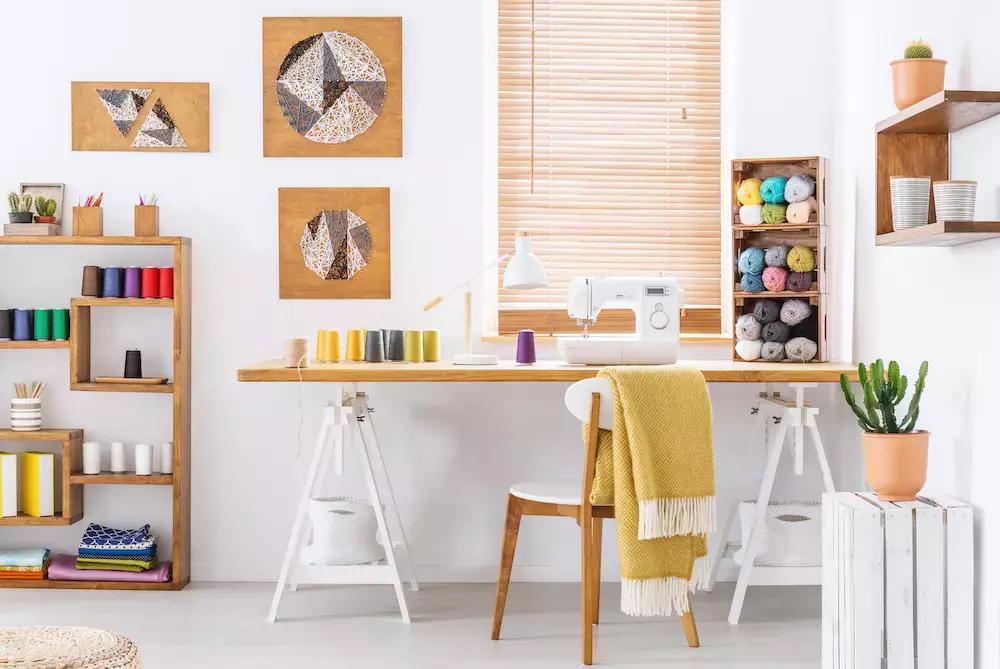Ready to Set Up Your Sewing Room? Plan with These Tips!
2020-05-25
Every enthusiast's dream is to have that one room just for "their" thing. Home sewers know the struggle of trying to pack away or store everything and then work on the kitchen table for short sessions. Having a sewing room can help you relax and allow for more time to spend on actual sewing!
Of course, there are a ton of advantages, including having the ability to organize everything, quickly access what you need, and plan out your projects visually. However, you'll need to decide on how you'll set up your room to make sure everything is safe, accessible, and comfortable.
Choosing the Right Room
Most people don't have much choice, but if you have a spare room in your home, that's the one! Others, however, may have an option between an extra bedroom, an unused "formal" dining room, basement, or fitted attic.
Clean out the room available, and see if you can manage your storage and sewing areas to allow double-use of the room. For example, if that spare room is also a guest room, consider a day-bed, and then use the dressers for storing your sewing equipment.
Managing Your Furniture, Equipment, and Such
The furniture you'll need for sewing includes a sewing table and a cutting table. Of course, one table could pull double-duty. However, you'll need a good chair, space for your ironing board, and then, of course, storage space.
Ideally, with a sewing room, you won't have to pack away everything after each session. A table where you can leave your sewing machine out is ideal. Additionally, if you can leave out your ironing board, that would be excellent too!
Storage and Organizational Options
Every sewer knows that with sewing comes a lot of tools, notions, and other items you need to complete your projects. To keep things neat and tidy, and so you don't lose anything, be sure you create a good organizing system.
Start by giving similar objects their own space. This means your pins and clips should have a dedicated space only for pins and clips. Your needles should have their own spot, and so should your fabric.
It is easy to get lost in storage and organizational tools because it seems like everything needs it's only box or drawer. If your room has space for a dresser or hutch, then consider using that storage option, or if you have access to a closet, consider hanging storage for threads, fabrics, and other haberdasheries.
Get creative when organizing your room! Closet organizers, small drawer inserts (usually for jewelry or accessories), and even rolling bin-style shelves can be great storage solutions.
Map Out Your Room
Anyone who's tried to rearrange a room without a floor plan can understand this struggle. Measure out the room and your furniture. You don't need to draw everything out, but knowing what will and won't fit can you decide what to put in the room and where to put it.
Creating a triangle for your prep (cutting and pattern work), sewing machine, and storage space is ideal. When you have the option of a sewing room, take the time to make sure that it allows you to work efficiently. It can be a stress-free place in your home where you can manage all of your projects easily.
Stay Organized with GoldStar Tool
Keeping your sewing room tidy and organized will help you keep track of everything you need for your next project. Be sure to check out GoldStar Tool’s storage essentialsso you can neatly set up your new space and get back to sewing!





